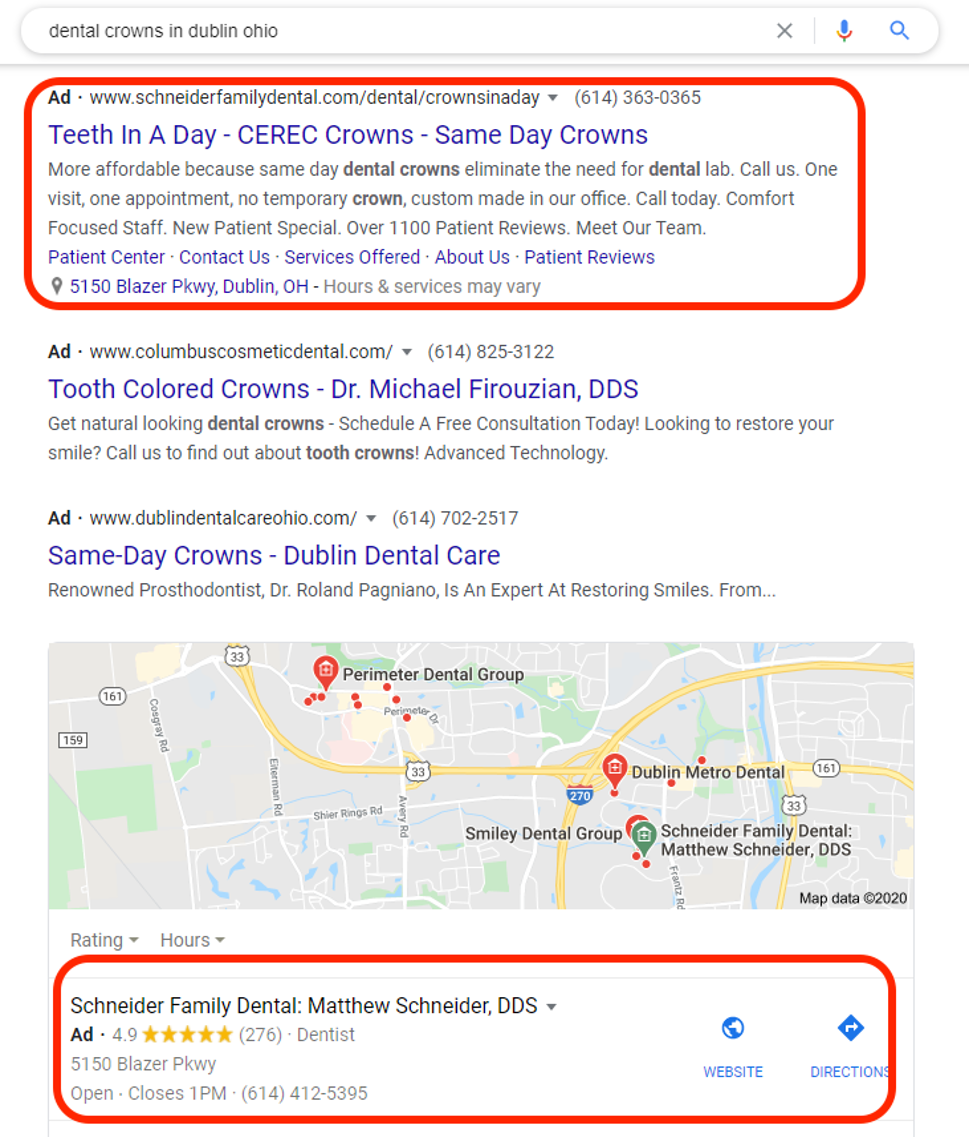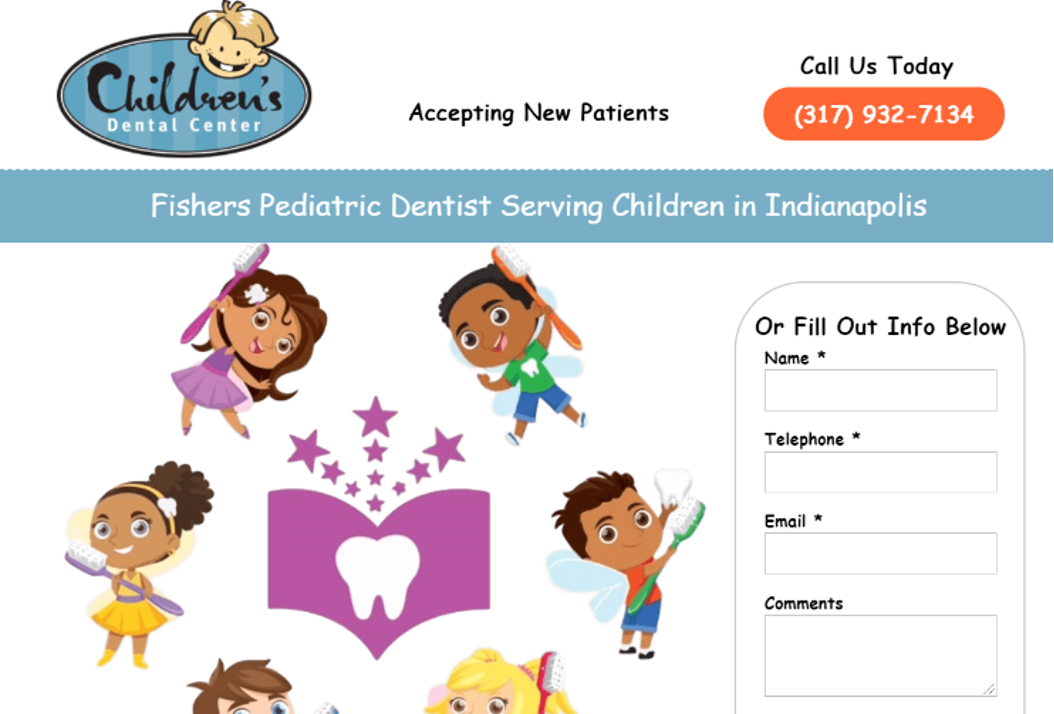By Sean White
This article discusses Google pay-per-click (PPC) advertising as a major part of a dental practice’s marketing strategy. It also explores the benefits of PPC advertising as well as budgeting and optimizing PPC campaigns.
In today’s Marketing Corner, we’ll discuss Google pay-per-click advertising — also known as PPC, Google Ad Words and search engine marketing (SEM). Through the years, we’ve seen an increase in dental practices using PPC advertising as a key ingredient in their marketing strategy. It has proved to be one of the most effective ways to reach potential patients while promoting your practice and services on Google searches.
Benefits of Google Pay-Per-Click
1. Provides Immediate Visibility
If you just started your practice or haven’t done any digital marketing before, we recommend you take a proactive step in your lead generation efforts. Once your PPC campaign is set up, it can start delivering ads to your audiences fairly quickly — especially compared to other means of internet marketing like search engine optimization (SEO). Unlike PPC, SEO attracts users to your website through organic (unpaid) searches.
2. Leads to Measurable and Trackable Results
Google PPC enables you to set tracking codes, links and even phone numbers to understand how your patients are interacting with your practice online. This tracking shows you when a PPC ad leads a prospective patient to call your office, use the chat function on your website, or fill out a contact form on your website. Much of PPC tracking has information you can reconcile with your new patient database, attach value to those patient interactions based on what services they purchased, and understand what your return on investment (ROI) looks like.
3. Leads to High Conversion Rates
The purpose of a PPC campaign is not to drive your prospects to your homepage. For example, if a patient is searching for dental implants in their area, they will be served a Google PPC ad at the top of the search results page. A conversion-driven PPC ad will link to a landing page that correlates with the original search topic — in this case, dental implants.
The landing page should answer the search query or solve the problem posed in the search topic. PPC landing pages are focused on conversion because it directs the user to take a specific action. These pages typically include a contact form to fill out or a phone number to call so the user has ample opportunities to interact with your practice and convert.
4. Compliments Other SEO Efforts
When combined, PPC and SEO work together to attract new patients through paid advertising and organic search. For example, if someone searching for your services scrolls past your PPC ad at the top of the search results, they may also see your practice in the local map area, and then again in a lower link on the same page. The latter two instances are due to SEO. Simply put, PPC and SEO can create more instances where your practice can be discovered in a Google search — ultimately driving more clicks to your website and more conversions from new patients.

Your Practice Appears More Often With Pay-Per-Click
Here’s an example where someone is searching for dental crowns in Dublin, Ohio. The PPC ad is at the very top, where you see Teeth in a Day. You’ll notice the web address doesn’t send the user to the home page. This link sends users to a landing page where they can learn more about same-day crowns and schedule an appointment with this dentist. The Teeth in a Day title paired with a link to that specific page is an example of a message match. This provider has done a great job in matching up the search with a relevant link for the user. Being at the very top of search results for the keywords dental crowns in Dublin, Ohio increases the chance for a click or a conversion.
As mentioned above with other SEO efforts, another opportunity for your practice to show up during a search is in the local map area. With PPC, practices can pay to appear at the top of Google’s local 3-pack. With a finely tuned PPC strategy, your practice can rank highly in the ad areas at the top and bottom of the search results as well as in the local map section. Appearing in these areas provides further opportunity for your practice to take up more real estate on the first page of a Google search.
Campaign Budget
PPC campaigns are funded using an open-wallet approach. This means you set the maximum and minimum dollar amount for each campaign with the understanding that what you get out of the campaigns depends on what you put into them. Your budget simply depends on your goals, and it’s important to discuss those end-goals with your marketing partner.
With our clients, we recommend $1,000 as the minimum to spend. However, you’ll need to increase spending to beat out competition that could be bidding higher than you in their campaigns targeting the same keywords. Focus your campaign efforts on high-priority service keywords to ensure your budget is being used efficiently and competitively. Splitting your minimum allowance into two different campaigns weakens both campaigns, leaving you vulnerable to competitors out-bidding on your keywords and lowering your return on investment.
Setting Expectations
In order for the partnership with your marketing team to work out, it’s vital to have proper expectations going into each campaign. For example, there must be an understanding that it typically takes at least a week after launching your campaign to start seeing results or conversions. Each of your PPC campaigns should have its own unique set-up and strategy. Take time to research the specific demographics and other information about your audience to give your practice the best chance of generating clicks, phone calls and contact form submissions. Analyze your results to figure out if you’re attracting the kind of patients you’re looking for.
Developing a PPC Strategy
1. Having a Call to Action
In marketing, a call to action tells a user what action you want them to take. These can include phrases like give us a call, schedule an appointment or contact us, which prompt the user to interact with your practice. Along with these standard calls to action, also consider sweetening the deal with discounts or offers like a complimentary consultation for a specific procedure. With the understanding that some dental procedures can be extensive and appear intimidating to patients, offering a consultation could entice a prospective patient to learn more and reach out to you.
2. Training Your Team
As your PPC campaigns urge prospective patients to call your practice, train your front desk team to expect these calls and to answer them with an enthusiastic, welcoming tone. Introducing PPC campaigns into your marketing strategy will manifest more incoming phone calls and emails than what your team is used to. Put more of a focus on your internal team to respond and convert those phone calls and emails into new patients. Remember, your team is a part of this strategy as well! Make sure you’re communicating to them what to expect and try to encourage them throughout this process.

3. Building a Conversion-Driven Landing Page
Here’s an example of a pediatric dentist’s landing page for a PPC campaign. The user is brought to a landing page like this once they click on a PPC ad link. While this landing page follows similar design elements of their website, it’s not necessarily connected to the rest of their website. You don’t see any social media buttons to distract visitors. You don’t see the main navigation for home, about us or other web pages. This landing page is meant solely for conversion. Conversion elements on this page include the orange button, urging visitors to call us today, along with a short contact form.
This contact form asks for as little information as possible so the user is comfortable with sharing their personal data. Lower on the page, users can learn more about other services offered, patient reviews and a picture of the team. This is an example of a landing page that is very simple, straightforward and designed for conversion.
Analyze, Revise and Apply Your Findings
After setting up and launching your PPC ads, it’s time to optimize. Part of a good PPC strategy is analyzing the performance and applying revisions based on your analysis. Once you’ve launched your PPC ads, Google uses artificial intelligence to learn more about your audience’s search behavior over time and allocates your daily budget accordingly. Your daily budget is determined by your overall budget ($1,000 in our example) divided by how many days you plan to run your PPC campaign. As with your overall budget, your daily budget depends on what you’re comfortable spending each day. After your first month, you’ll likely have learned enough to start optimizing your ads. Have patience with each step of this process as you learn new information and optimize your PPC campaigns.
Revise Your Campaign Using Analytics
This is where optimization comes into play. Consider which aspects of your campaign work and which don’t. Look at what elements in your ads are being clicked on, and what’s being ignored. Ask yourself questions like:
- Am I serving the ads at the right time of the day?
- Am I spending enough money to get the number of conversions I’m looking for?
- Is my daily budget running out in the middle of the day?
- Is there always an amount of the daily budget left over at the end of each day?
Learning the answers to these questions will ensure that you are best utilizing your PPC campaign for conversion rates.
Allocate Your Budget Based on Conversions
As you learn more from the analytics in your PPC campaigns, keep a critical eye on which campaigns are performing better than others. If, for example, you have some ad sets that simply aren’t getting conversions, there’s no need to keep those ads running as they are. Remove them or enhance them to be more like your successful campaigns. Explore your options for tracking software and tools to better understand your return on investment. Knowing which ad campaign attracted a new patient and what treatments that patient purchased gives you further insight into the ROI of your Google PPC campaigns.
Update Your Campaigns Regularly
There is no question that users’ search habits change over time. For this reason, you should have someone on your team or your marketing partner looking at your PPC campaigns consistently. The COVID-19 crisis is an example of an event where PPC campaigns changed their keyword strategy to meet the needs of new search habits. Safe dentist near me or Coronavirus dentist became relevant keywords to bid on and build campaigns around to attract potential patients searching these phrases. If you’re looking to acquire new patients from particular keywords, bid on those keywords in your PPC campaigns.
Consider these key takeaways if you plan on launching a PPC strategy:
- A PPC strategy provides immediate visibility for your practice while complimenting other SEO efforts.
- PPC campaigns are conversion-driven to attract new patients when coupled with well-designed landing pages.
- Set a budget that works for your practice, and communicate expectations with your team.
- Track your results closely for a true understanding of your ROI.
- Regularly optimize your campaigns and adjust based on your goals and changes in user behavior.
Visit our website at whiteboard-mktg.com for more information and downloadable resources.



